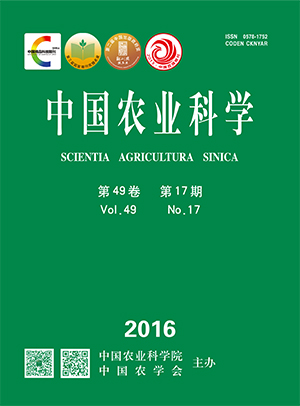-
Impact of Ozone Stress on Growth and Yield Formation of Rice Genotypes with Different Ozone Sensitivity
- SHAO Zai-sheng, SHEN Shi-bo, JIA Yi-lei, MU Hai-rong, WANG Yun-xia, YANG Lian-xin, WANG Yu-long
-
Scientia Agricultura Sinica. 2016, 49(17):
3319-3331.
doi:10.3864/j.issn.0578-1752.2016.17.007
-
 Abstract
(
499 )
Abstract
(
499 )
 HTML
(
3 )
HTML
(
3 )
 PDF (503KB)
(
760
)
PDF (503KB)
(
760
)
 Save
Save
-
References |
Related Articles |
Metrics
【Objective】 In order to cope with the increasing tropospheric ozone concentration, the responses of the growth and yield formation of rice with different ozone sensitivities were investigated. 【Method】 By using glasshouse-type fumigation chambers, 23 rice cultivars or lines were grown in 2013 at two ozone levels: Low ozone concentration as control (C-O3, 10 nL·L-1) and high ozone concentration as elevated O3 treatment (E-O3, 100 nL·L-1) from around a week after transplanting until maturity. Based on the decrease in the above-ground biomass under high ozone concentration, these rice genotypes were clustered into three types by the MinSSw (dynamic clustering method-minimum sum of squares within groups) method, namely A (low sensitivity type rice), B (moderate sensitivity type rice), and C (high sensitivity type rice) in the order of ozone sensitivity from low to high, respectively. The effects of ozone stress on plant height, tillering dynamics, grain yield, and yield components were determined, and relationships between their responses to ozone stress and the ozone-induced changes in the above-ground biomass at maturity stage. 【Result】 Compared to the control, ozone stress decreased the above-ground biomass of three rice types A, B, and C at grain maturity by 19%, 38%, and 52%, respectively, and significant treatment effects were detected in B and C. Ozone stress decreased plant height at all growth stages except the earliest stage, and the reduction in plant height was increased gradually with the plant development, but the magnitudes of decline among different rice types were comparable. On the contrast, the influence of ozone stress on tiller formation varied among different rice types. Averaged over the whole growth period, ozone stress had no significant effect on tiller number of rice type A, but significantly reduced those of B (-17%) and C (-23%). Ozone stress significantly reduced grain yield and yield components, and the different rice types exhibited different reduction in panicle number per unit area (A had no response, but B and C decreased by 16% and 26%, respectively), spikelets per panicle (A, B, and C decreased by 16%, 19%, and 27%, respectively) and spikelets per unit area (A, B, and C decreased by 11%, 31%, and 46%, respectively). However, the ozone-induced reduction in filled grain weight, filled grain percentage, and final grain yield showed small differences among three rice types. The ozone-induced reduction in grain yield was mainly caused by the sharp decline of filled grain percentage and total spikelets, and secondly associated with the decline of panicle number and filled grain weight. There were significant positive correlations between the ozone-induced response in above-ground biomass and the tiller number at middle and late growth stages, final panicle numbers, spikelets per panicle, as well as spikelets per unit area, but no close correlation with plant height, filled grain percentage, filled grain weight, or the final grain yield at each growth stage. 【Conclusion】Ozone fumigation of 100 nL·L-1 during plant growth shortened rice plant height, inhibited tiller production, spikelet formation, and especially grain filling, which led to a dramatic decline in grain yield. Rice ozone sensitivity was closely associated with the ozone-induced changes in tiller number at middle and late growth stage, final panicle numbers, spikelets per panicle, and spikelets per unit area, which can be used as screening parameters in ozone-tolerant rice breeding.









